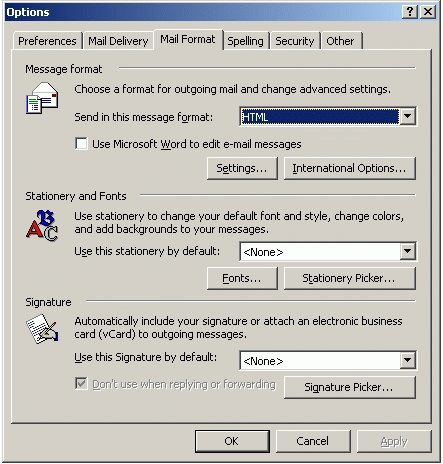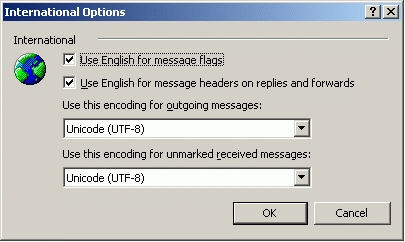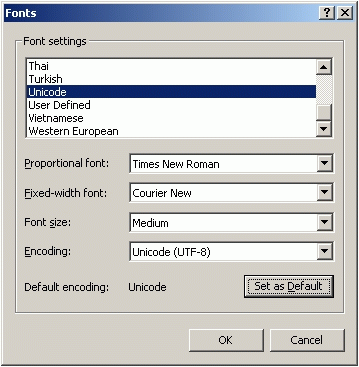Font Selection: It is necessary to select
a font that is able to display Unicode characters.
Andalus, Arial Unicode MS, Arabic Simplified, Arabic
Transparent, Lucida Sans Unicode, Microsoft Sans Serif,
Tahoma, Times New Roman, and Traditional Arabic are able to
display some of the Unicode fonts. Arial Unicode MS font
displays a very wide range of Unicode characters. For
most Arabic text viewing, Times New Roman, Arabic Transparent
or Traditional Arabic fonts should be suitable.
However, if you experience any difficulties, Arial Unicode
MS font should be tried. The Times New Roman font that
comes with Windows 2000 is a Unicode capable font, and it
displays Arabic, English, Greek, and Hebrew fonts
nicely. Prior versions of Times New Roman were not
tested by me.
Outlook 2000: First, click the mouse on Tools and
select Options....
Second, click the mouse on Mail Format and then select HTML
for "Send in this message format:"

Third, click the mouse on International Options.
Select Unicode (UTF-8) for outgoing and unmarked received
messages. Check the Use English for message flags and
headers.

International Font Selection: For International Font
settings, select Unicode. Next, select a font that is
Unicode compatible, such as Times New Roman. Choose a
font size that is easily read. Finally, set the Encoding
to Unicode (UTF-8). Click the Set as Default button to
retain the Unicode configuration. Click the mouse on the
OK button.

After Outlook 2000 has a Unicode encoding and a compatible
font, Arabic, English, Greek, and Hebrew fonts should
display in Outlook 2000 properly.
If there are difficulties with these browser and email
configurations suggestions, please let me know. I have
not been able to do many tests.
Last edited 06-11-2000
